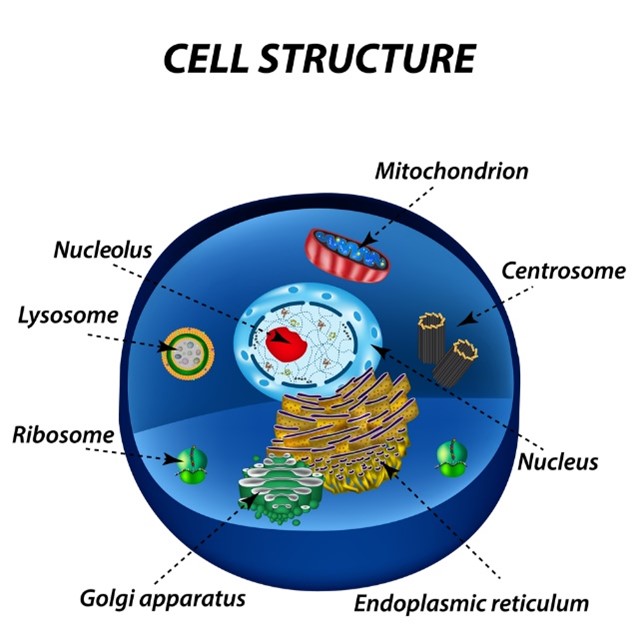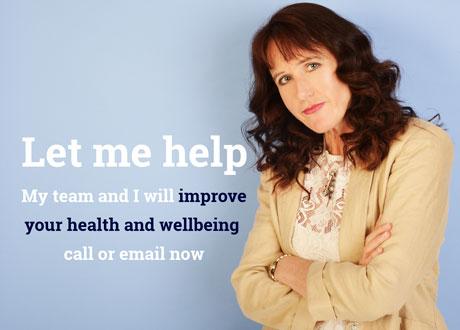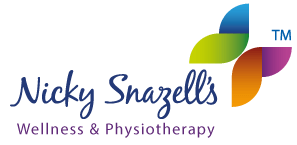I get asked a lot of questions about physiotherapy assessment. What do we do at my clinic? How do I assess? How do I teach assessing?
In my previous blog A Different Perspective On Your Physiotherapy Assessment, I mentioned that the first and most important thing is to have a safe, quiet environment that builds a connection and trust. If you don't feel that with your physiotherapist, you're not going to want to proceed to any kind of medicine or treatment and your outcome won't be as successful. There won't be that connection.
To recap, the most important thing for the patient is that the physiotherapist has created a sacred space, a quiet office, where the phones are switched off, the computer is not a distraction, and you eyeball each other to get that connection. And then your physiotherapist listens to your story. And how you describe what's going on with you. And then, in that moment of connection, your physiotherapist can get glimpses of the real authentic self behind the story, who you really are.
Once your physiotherapist glimpses the story of the problem, he or she can start to elicit some background which is past medical history. So we'll ask questions like the health of your family to see if there are relevant genetic links. We may also explore your beliefs and values and more about your family so we'll know how difficult it is for you to attend and for you to have the necessary treatment. We may touch on your past experiences of treatment because if you've been scared or let down previously, you're going to have very different expectations. We need to address that head-on.
And then, of course, my favourite four keys questions (see my first book ‘The Four Keys To Health’ available on Amazon), which looks into your mindset, lifestyle, fitness and what you eat. All these help us assess how well your immune system is working, and your general health, which helps refine our treatment prescription.
That, in a nutshell, is the first part of the physiotherapy assessment.
In my next blog ‘The Subjective Physiotherapy Assessment – Part 2’ I will continue on this journey of helping you understand how to really get the most out of this process.
In the meantime, if you are in pain right now and you feel confident we can help, then why not call now. Erica, Jean and Charlotte will be happy to help.
Call 01889 881488 Now
p.s. Don’t try to book online at this time as that is only suitable for existing clients already being treated for an existing problem.
How can I relieve neck pain? The first thing to understand is how this happened, neck pain can be caused by other conditions such as muscle weakness in the shoulders, perhaps lifestyles such as workplace seating or even sports. Take a moment to consider what could be causing yours. While doing this, think about the type of pain you have. Is it a strain or a trapped nerve?
What does a trapped nerve in neck feel like?

A trapped never typically feels more painful in certain positions, and the pain again can be shooting, described as electric or pulsing. A trapped nerve can throb and jolt when you are moving. A strain usually feels more like a burn or a tear; these sensations can be confusing, so please do not worry if you struggle to distinguish between the two - Our team can help you understand this better and decide the best ways to help you.
How long does neck strain take to heal?
A strain can take between 24-hours and a week to recover. If you are concerned Nicky Snazell can help you with pain relief, it is still worth considering what caused this. The underlying source is always the best way to provide you with long-term pain relief, and maintenance can reduce reoccurrence.
What is the fastest way to fix a stiff neck?
If you are not ready to consider treatment, we recommend gentle stretches and a gentle massage in-between cooling and warming treatments like an ice-pack and a hot water bottle/wheat/rice bag. Be careful when doing this yourself. If you are unsure how to manage this effectively, contact us.
Which massage is best for neck pain?
This depends on how you got the neck pain; if it was doing sports, then as you might expect, sports massage could be the proper treatment. Typically, massage is the right treatment for neck pain; manipulating the soft tissue can relax the problem and promote blood flow and healing.
Where can you go for help with neck pain?
Nicky Snazell pain relief clinic in Stafford can help with neck pain. Please view this page for more information on neck pain, or contact us. Our experienced team of physiotherapists will help you navigate your pain and provide the most effective advice to help you long term.
Rotator Cuff Physiotherapy
Many have heard of the rotator cuff in the shoulder and, not surprisingly, believe it to be a single part of the shoulder. The rotator cuff is, in fact, a group of four muscles that work together to provide dynamic stability of the shoulder joint, helping to control the joint during rotation:
- Supraspinatus
- Infraspinatus
- Subscapularis
- Teres Minor
The Supraspinatus is a small muscle which you can feel above the bony ridge on the back of your shoulder blade (scapula). It attaches to the top of the arm bone (humerus), just below the shoulder joint. The task of this muscle is to move the arm sideways away from the body for the first 15 degrees. After that other muscles take over most of the load, it is an area of the should that can be torn and is popular for 'Rotator Cuff Physiotherapy'
The Infraspinatus is a thick triangular muscle, which occupies the main part of the sculptured dent in the back of the shoulder blade, below the bony ridge. As one of the four muscles of the rotator cuff, the main function of the infraspinatus is to turn the arm out as in the backhand in tennis and stabilise the shoulder joint.
The Subscapularis is a large triangular muscle at the front of the shoulder blade, between the shoulder blade and the rib cage. It attaches to the top of the arm bone (humerus) and into the front of the shoulder capsule. Its role is to turn the arm in.
The Teres Minor muscle sits below the Infraspinatus. It is quite a small rounded muscle and its primary task is to stop the arm moving up when it is moved out sideways (abducted). It also helps the Infraspinatus turn the arm out.
TREATMENTS FOR ROTATOR CUFF TENDINITIS
Rotator cuff tendinitis describes the inflammatory response of one or more of the four rotator cuff tendons, due to impingement or overuse, and leading to more and more micro-trauma that can then lead to a tendon rupture and will require Rotator Cuff Physiotherapy.
The inflamed thickening of the tendons often causes the rotator cuff tendons to become trapped under the acromion (the bony projection of the shoulder blade over the shoulder joint) – like a carpet stuck under a door – causing sub-acromial impingement. Failure to heal then leads to further damage. Early treatment of tendinitis, therefore, is necessary in order to prevent the development of more chronic and serious conditions.
Treatment can include: first and foremost scapula re-education exercises, postural exercises to lessen the impingement, gentle shoulder mobilisations and massage, aided by local electrotherapies, such as laser, pulsed shortwave, shockwave and deep oscillation. Specific rehab exercises can help guide you back to full fitness.
You can now book your next appointments online via our website
You will see an orange box at the top left of each page. Click on that and it will take you to the launch page.
Online booking is only suitable for existing clients:
- You are an existing client AND
- You are being treated for an existing episode SO
- You know which therapist to book
New clients and existing clients with a new problem should either fill in a webform or preferably call the clinic on 01889 881488.
Existing clients with a current treatment episode can click the link to take them to online booking. You will need to enter your first name, surname, date of birth, email and mobile number. Please make sure you enter your name as you provided to us when we first registered you or we will not be able to identify you on our system (Your browser should save the above details except your date of birth)
Then choose:
- the type of appointment
- the practitioner (even if there is only 1 option, you still have to choose)
- the time of day you would like an appointment
- the date that best suits you
- the time that best suits you (even if there is only 1 option, you still have to choose)
You will then get a confirmation screen to check all the details and click the Opayo (formerly Sagepay) button to enter payment details below.
Opayo will require your first name, surname and address. (apologies for some repetition here. We are waiting for our management software developers to update their software)
Please note that your appointment booking will not complete until payment is made.
At Nicky Snazell’s Wellness & Physiotherapy Clinic, we get to treat quite a lot of sports injuries and by far the number one sport for injuries we see is for horse riding, perhaps not surprising given how popular this pastime is in the area

A recent large scale study in the USA supported our observations, while focussing on the previously unrecognised scale of the problem and its potentially high rehabilitation costs.
The 10 year study of nearly 25,000 patients who had suffered horse riding injuries, uncovered some concerning facts about the level of injury and although not yet determined, it suggested the real cost of rehab could be high.
To put into perspective, the risk of hospital admission was higher than football, car racing, motorbike racing and skiing.
The most common sites of injury were:
- chest 37%
- arms and legs 26.5%
- head injuries 23%
- abdominal injuries 13.5%
Most injuries were classified as either mild, which was 33%, or moderate at 43.5%, but of these 88% required hospital admission for an average of 4.5 days, 28% needed intensive care and 10% required surgery. Fortunately, most (57%) were discharged from hospital and required no ongoing rehab but 7% had to transferred to a rehab centre for ongoing care.
The death rate was 1.3%, of which by far the majority at 75%, were due to head or neck injuries.
Surprisingly a large fraction of the riders involved in injury were not wearing helmets at the time of their accident. This emphasises the need for awareness of the importance of wearing adequate protective clothing, in particular wearing a helmet to protect against head injury and death.
For those who would like to read the full paper: Hearing Hoofbeats? Think head and neck trauma: a 10 year NTDB analysis of equestrian related trauma in the USA, visit https://tsaco.bmj.com/lookup/doi/10.1136/tsaco-2021-000728
You Spoke
Recently we asked for feedback on your thoughts on our clinic and most importantly, how you would like us to improve. I’m really pleased to say that we had some great responses which have given us plenty to think about. We have given all who responded a free massage and of course we held a draw as promised and the winner now has £250 credit in his account. A big thank you to all who took the time to help us.
We Listened
Of course, there were a number of issues raised and we listened. We have already started an action plan to deal with the ideas and concerns raised in order of frequency raised. The number one issue by far was a request for more information. Overwhelmingly, you wanted to see more use of social media, specifically Instagram and Facebook.
You Want More Information & More Social Media
I’m delighted to tell you we already have a new capability up and running and from now on you are going to see a lot more presence on both Instagram and Facebook. Nicky has already created over 50 video’s which will over time be recut and added to these social media platforms. Not only that, Nicky has recently been on USA radio again, being asked for her expert opinion on alternatives to opiates for treating chronic pain. This also provides more content.
You requested more information before your first visit, what to expect when you arrive, more information on what we treat and how we treat and also on the capabilities of the therapists so you understand better who you should see for a particular problem. All of this will gradually be added and one by one we will provide you with the information you requested.
Please Share
We are passionate about preventative health and about the unquestionable merits of face to face, hands on treatment. Sadly, these are services which seem to be disappearing. Could you help spread the message by sharing our posts with your circle of friends. One day, one of those friends may be desperate for real, preventative health care.
Here are the links
Instagram: https://www.instagram.com/nickysnazellsclinic/
Facebook: https://www.facebook.com/painreliefclinic.co.uk
If you are in pain, we can help.
Call Now. 01889 881488. Erica, Jean & Charlotte will be happy to help
This may be difficult to grasp at first, but if you were to be able to look inside your body, down to the tiniest detail, you would see you are a community of cells, trillions of cells.
Development of humans started from a single cell structure. For growth, the only opportunity was to get bigger, but just like a balloon, the cell could only get so big before the cell membrane would rupture. The only other option to grow was to start working together in communities.
All cells have the basic functional capability that we as humans have. They can process food for energy, dispose of waste, detect energy signals etc. They could also get eaten by predators, so survival required working together as a community. As these communities grew, it was clear that it made sense for one cell to specialise in one area and another cell to specialise in another. Thus, some cells specialised in excretion, others fighting infection, energy absorption, or movement.
We do the exactly the same in our human communities, some working in food production, some in health, some in transport, some in communication, some in energy production. The list goes on.
In your body, you can think in terms of speciality cells for muscles, bones, nerves and so on.

Cells, just like humans, can get unhealthy and die. To protect the community as a whole and to avoid one unhealthy cell taking down the whole community, cells developed a suicide capability. Every day, millions of your cells die and are replaced by new healthy ones.
All cells require energy to exist and this energy is produced in what can be considered the cells engine, called the mitochondria. The main task of the mitochondria is to convert glucose into energy. It is also the mitochondria which is equipped with the suicide capability, to destroy the cell if it gets diseased or malignant.
Some diseases, like cancer, have worked out a way around the self destruct. But that’s a whole subject on it’s own and there is a lot of well qualified material available to read on the internet.
What all this tells us is that our cells have worked out a complex and healthy way of surviving as communities and that you have the ultimate responsibility to make sure you play your part to keep those cells as healthy as possible. A good starting point is to eat healthy food and avoid unhealthy food. You don’t have to be a brain surgeon to realise that the latter is going to give all your cells a hard time. Do that for long enough and common sense will tell you there will be problems.
At Nicky Snazell Clinic we have a simple, easily understandable wellness program, taken from Nicky’s published book ‘The 4 Keys To Health’. If you need help to make sure you do the right things to keep your cells healthy, then call us. We can help.
Call Now 01889 881488. Erica & Jean will be happy to help
Many patients I see have experienced chronic and sometimes severe pain in a specific part of their body. Pain that’s lasted years, decades even. Pain that won’t go away and no conventional treatment seems to work.
These patients are resigned to suffering their pain for life. In many cases I find that their pain is the result of an emotional problem earlier in their life. It could be that they were abused as a child, or it could be it was a traumatic injury.
I witness the unravelling of these hidden traumas every day and it never fails to thrill me when it happens. Why?

Because then I KNOW healing can be possible.
When you find the place and time a trauma occurred, and really feel the mind –body link, then you are no longer a victim to the pain but a student as to what pain and illness teaches you.
For example, if you have been beaten as a child, you can guarantee those same areas come back to haunt you later in life, as disc prolapses, arthritis, frozen shoulders or neck ache and so on, that just won’t stop aching.
You Are The Author Of Your Life
As you replay these memories in your mind and you tell yourself a story about your body, you also have to be careful how you replay that story to yourself, because your memory is fluid. Yes, every time you recall something, you mould a new version of it. Memory isn’t like a DVD that plays the exact same story every time, no matter how many times you watch it.
Once your subconscious mind makes a link between past trauma and current pain, then physiotherapy treatment will be much more successful.
The words spoken by the therapist, whilst manipulating or needling you, can soothe the disturbing memories imbedded in an ancient trauma. Both of you may not be aware to start with that there are memories associated with your current physical pain. You may thus suddenly feel emotional and that is the memories associated with your pain in a certain joint or muscle, and they are being opened up and replayed.

In the hands of a holistic, medically trained practitioner, you can unravel these hidden mind body connections that are stopping your healing process.
Equipped with additional qualifications in psychology, shamanic reiki healing and neurolinguistics programming, I am very aware of the power of the mind. I feel strongly that it is of vital importance to analyse and reanalyse any block to a patient getting the healing results they want. I believe applying both an intuitive and scientific medical approach will achieve a much deeper understanding of your pain.
Rewrite the story of your life, starting today.
You can make today a whole new chapter – you just have to decide that you want to end one chapter of your life and start another.
If you are suffering from long term, unresolved pain, it may well be that you have hidden mental traumas that are locking your pain into your body. In this situation your pain will not go away until that link is identified. Nicky can help.
Call Now 01889 881488 and ask for an appointment with Nicky.
Erica & Jean will be happy to help
At Nicky Snazell’s Clinic, we strive to give you the best treatment experience possible, which means every part of your journey with us, from initial contact right through to saying goodbye, is as effective and as enjoyable as possible.
To achieve this, we have to make sure we have booked you in on the right pathway. This will depend on your immediate problem, your goals and your treatment history with us.
Read on to learn how to maximise the benefits of your treatment plan
If you have never been to our clinic before, we will aim to put you with the most appropriate therapist for your condition, allowing for factors such as your physical problem, your therapist preferences and also if you are wanting to claim on private medical insurance.

Once your therapist is sorted, we will book an assessment and possibly treatment, dependent on your wishes. Even if you have been assessed elsewhere, or if you think you know what your problem is, we will always assess you ourselves first, for both professional and ethical reasons.
After your initial assessment, you will probably need one or more treatments, with goals set and agreed, and interim reviews to check progress.
Get The Quality Of Treatment You Deserve
If you are returning with what appears to be a recurring problem, we will process this as a continuation of earlier treatment, provided your last visit was no more than 6 weeks previous. We feel that beyond this timeframe, an assessment is needed to make sure that your problem is not something new. Such an assessment might be quite short, but will be needed to make sure we are giving you the quality of service you deserve.
Maintenance and Wellness
It will be apparent that due to factors such as your age, type of problem, or a particular injury severity, then it might be advised that ongoing maintenance or wellness would be a better quality of life option for you, rather than to wait until the problem reoccurs.
With your agreement, we will transfer you to a maintenance or wellness level, with the frequency of treatments adjusted to best suit you. A time limit of up to 3 months is allowed. So just four treatments a year could give you a much better quality of life and most importantly, the confidence to get on and enjoy life, knowing that we have got your back should anything go wrong.
A lot of our patients are recognising that it makes a lot more sense to maintain their health, rather than wait to break again. For those already on this pathway, they are gaining a more pain free life, allowing them to do things they couldn’t have done before.
Save and Gain
Not only that, they are actually saving on treatment costs, as the amount of treatment they needed to get fixed after they broke, exceeded looking after themselves.
Get The Appointment Times That Suit You
Another obvious advantage of booking in advance is that patients are getting appointment times that best suit them and that they can plan for in advance, rather that calling at the last minute to see what is available.
If you have a long term, or chronic problem, it may well be that the cause of the problem cannot be cured, and the best option for you is to attend regular sessions to keep the symptoms under control. It’s a personal choice whether you opt for maintenance or wellness.
Maintenance is best for you if you have a chronic physical problem and you want this to be kept under control, but without having to get involved with your overall health condition.
Alternatively, you may want to go one stage further and not only keep your physical chronic problem under control, but also do all you can to improve your overall health. With our wellness program we will look at factors such as your lifestyle, diet & nutrition, weight, exercise and fitness and mindset.
Don’t Things Always Go Wrong At The Wrong Time?
We constantly get patients who have broken at the wrong time, maybe just before an important family event, or a much looked forward to holiday. Sadly, every year, some leave it too late and miss out.
Many of these problems would have been avoided if their mindset had been to maintain their body, rather than wait till it broke.
Ask yourself this. Would you plan an important holiday in a car that you hadn’t had serviced? Probably not. If you did and the car broke, you could only blame yourself. Not only that, you know for sure that getting it fixed will cost a lot more than if you had been smart and got it serviced beforehand.
Why the difference with your body?
If you have a pain problem or injury problem anywhere in your body, or just want a better quality of life, then call us now. We can help.
Call 01889 881488 Now
Physiotherapy Jobs Stafford - Apply NOW
Vacancy details
A rare opportunity for a physiotherapist to work at one of the UK’s leading private clinics, a fantastic working environment in a grade II listed building, with a friendly and motivated team and a high level of technical support. The role offers the job satisfaction of being able to use all the practical MSK skills with which you were trained, plus an exceptional ongoing professional growth opportunity to learn new skills from our in house world-class knowledge base.
The successful candidate will be able to demonstrate a keen desire to work hands-on, be a strong team player and show an ability to think outside the box. The clinic places equal importance on prevention as well as acute injury treatment. Our preventative, wellness program makes use of an in house developed and published health model.
FULL DETAILS HERE - Physiotherapist Jobs Stafford
FOR JOB INTERVIEW TIPS - JobsNorwich.com

